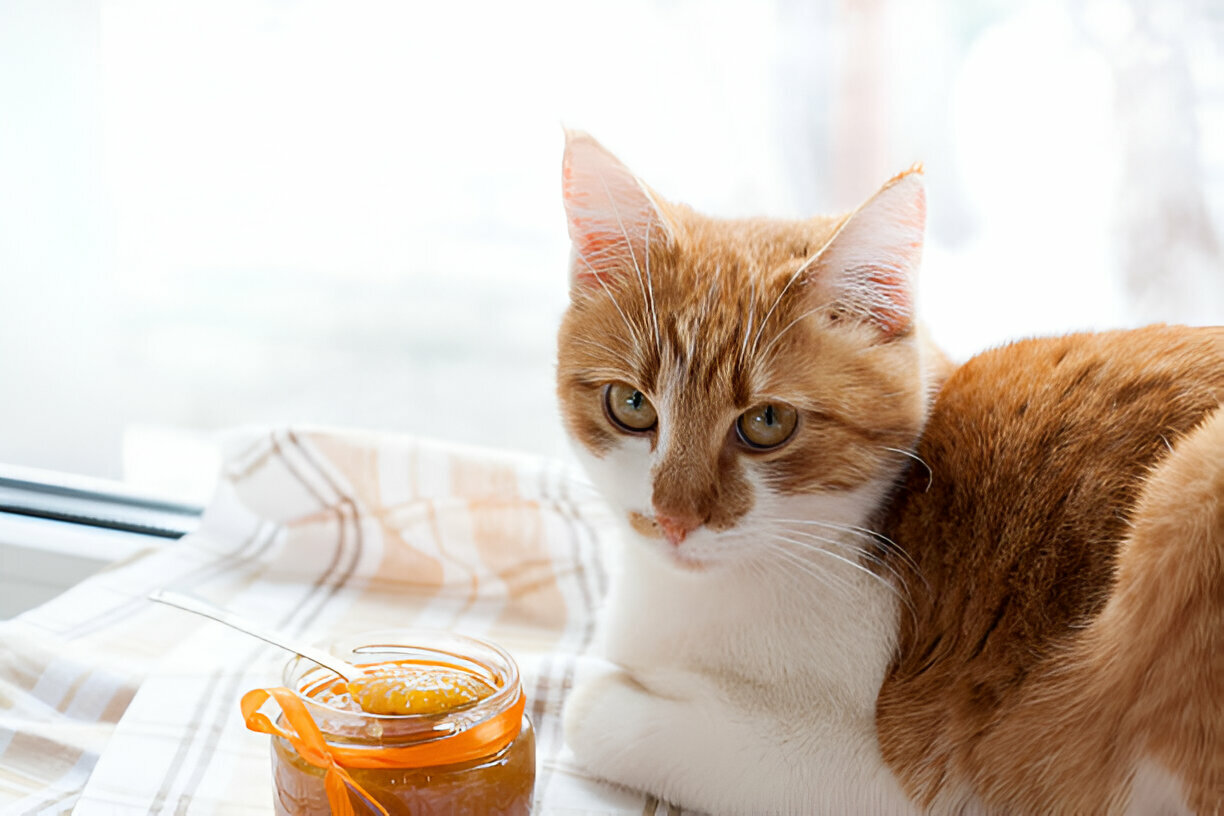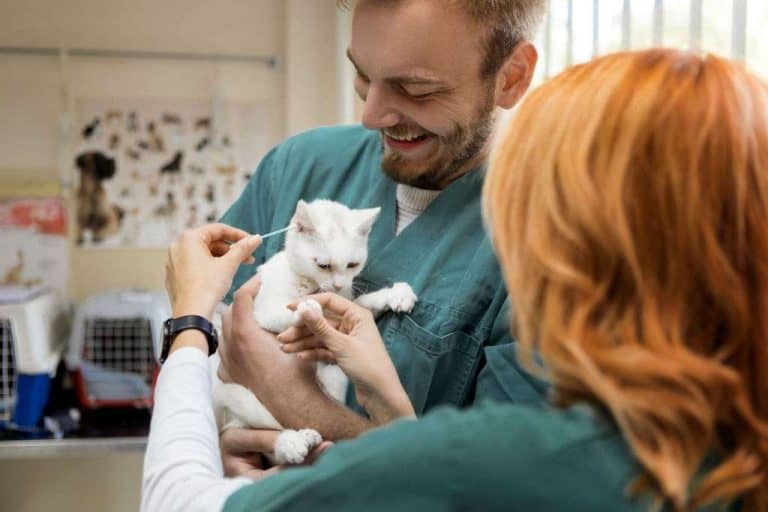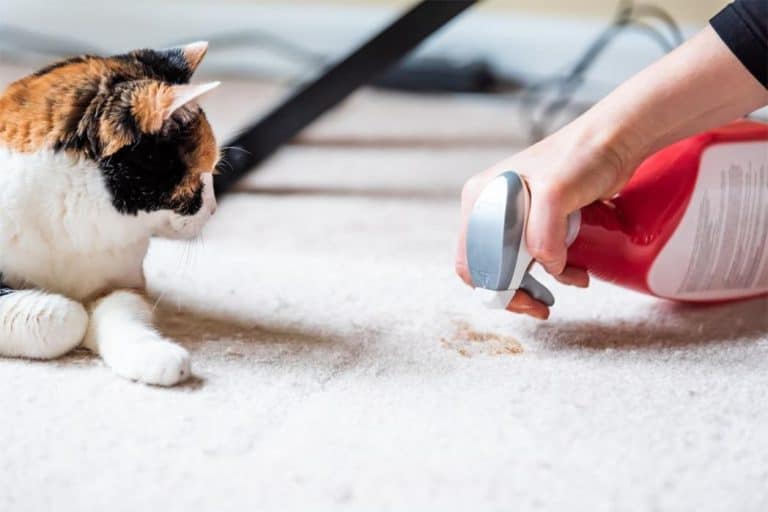Satisfy Your Cat’s Palate: Discover the Delightful Benefits of Cat Broth

Cat broth, a savory liquid supplement intended for feline consumption, has emerged as a gourmet treat that caters to the refined tastes of domestic cats. This delicacy is crafted to not only appeal to the feline palate but to also imbue their diet with a hydrating element, often rich in essential nutrients that support overall health and well-being. Unlike traditional cat food, broth offers a unique texture and flavor profile that can entice even the most discerning of whiskered critics.
Among the advantages of incorporating cat broth into a pet’s diet is its role in promoting hydration. Cats, by their evolutionary nature, have a low thirst drive and may not always consume adequate fluids, potentially leading to urinary and kidney issues. Broth is an excellent way of enticing cats to increase their fluid intake in an enjoyable and stress-free manner. Moreover, for cats with dental ailments or those who are recuperating from illness, the soothing, easy-to-consume nature of broth can provide a comforting dietary option.
The composition of cat broth often includes elements like vitamins, minerals, and taurine—an essential amino acid for cats—without containing the artificial flavors and preservatives that are typically found in some commercial pet foods. Additionally, cat broth can be served as a stand-alone treat or mixed with dry kibble to enhance its taste and textural appeal, offering a multifaceted approach to dietary enrichment that cat owners are finding increasingly invaluable.
Next, this discourse moves to unravel the assortment of choices available in the cat broth market, tailoring to various dietary restrictions and preferences. From broths that are grain-free and without by-products to those fortified with supplemental nutrients for specific health benefits, the selection caters to the nuanced nutritional needs of feline friends. This exploration will offer insights into how different ingredients in broths can cater to conditions such as sensitive stomachs, allergies, or age-related dietary considerations.
In continuance, attention will be drawn to the culinary art behind cat broth-making, highlighting the innovation and creativity that pet food artisans exhibit in creating these palatable concoctions. From responsibly sourced ingredients to culinary techniques that lock in flavor and nutrition, the fine craftsmanship involved in the production of high-quality cat broths is indicative of a broader trend: the humanization of pet food and the ascent of pet wellness to a level that parallels the care and attention humans expect in their own diets.
- Cat broth offers a tasty and hydrating alternative for cats who may be reluctant to drink sufficient water, which is essential for their kidney health and overall well-being.
- This savory liquid can be an excellent way to entice picky eaters or to stimulate the appetite of older cats, making mealtime a more appealing experience for them.
- Rich in vitamins and minerals, cat broth can provide supplemental nutrition and can be particularly beneficial for cats needing to regain strength during recovery periods.
- It serves as a low-calorie treat that can be safely added to a cat’s diet without the risk of unnecessary weight gain, given it is served in appropriate amounts.
- Cat broth can come in handy as a vehicle for administering medications, as its strong aroma and flavor can help mask the taste of pills or liquids that a cat might otherwise reject.
- Offering a variety of textures and flavors, cat broths are designed to cater to different feline preferences and can help ensure that cats remain interested in their food.
- The warm and comforting nature of cat broth can have a soothing effect on cats, potentially serving as a stress reliever for anxious or unwell felines.

Can Cat Broth Enhance Your Feline’s Dining Experience and Health?
Cat Broth – a savory liquid made by simmering animal parts, vegetables, and herbs – offers an array of sensory and nutritional advantages for our feline friends. Often confused with cat soup, which is typically a lighter liquid, cat broth is known for its rich flavor and appealing texture. Hydration promotion is a substantial benefit, particularly pertinent for cats who are reluctant drinkers. Palatability is another key term related to cat broth; it describes the broth’s ability to stimulate a cat’s appetite, often enticing picky eaters. Nutrient absorption is also enhanced by the inclusion of broth in a cat’s diet, as it provides an easily digestible form of hydration packed with vitamins and minerals.
Understanding the emergence and use of cat broth requires a brief look at the natural dietary behaviors of cats. In the wild, a cat’s diet is composed mainly of prey that contains a significant amount of moisture. Domesticated cats, however, often rely on dry kibble that lacks this necessary hydration component. As such, pet owners have turned to cat broth as an appetizing way to increase their pet’s fluid intake. Not only does this practice align with a cat’s inherent moist-food preference, but it also offers a supplementary feeding option for those requiring increased liquid consumption due to health issues or recovery scenarios.
Revolution of Pet Food: Natural and Organic Options
Traditionally, pet food has been largely mass-produced, with a focus on convenience and shelf-stability over ingredient quality. However, with the rise of health-conscious pet owners, there’s been a shift towards natural and organic pet foods that prioritize the use of high-quality proteins, vegetables, and fruits while avoiding artificial preservatives and colors. This segment of the pet food market emphasizes whole-food ingredients that are sourced responsibly and prepared in ways that preserve their nutritional integrity. The trend also sees many pet foods incorporating superfoods like blueberries, kale, and pumpkin, which are known for their health benefits in human diets, translated into pet nutrition.
Technological Innovations in Pet Care
The technology field has expanded into pet care, bringing with it a plethora of gadgets and apps designed to improve the lives of animals. GPS collars with real-time tracking ensure that owners can locate their pets at any time, increasing safety for outdoor-roaming animals. Automatic pet feeders facilitate controlled portions and feeding schedules, and can even be smartphone-operated, allowing for remote feeding. Health monitoring devices provide data on a pet’s activity level, sleep quality, and calorie expenditure, helping owners and vets detect changes in behavior that might signify health issues. Furthermore, these technological advancements have given rise to a community of pet lovers who connect over social media platforms dedicated to pet wellness and advice.
Understanding Feline Nutrition
In the realm of feline health, understanding the nutritional needs unique to cats has become central to providing them with a balanced diet. Unlike some animals, cats are obligate carnivores, which means that they require animal protein to thrive. High-quality cat foods focus on real meat as the primary ingredient, supplying essential taurine which is not found in plant-based proteins. The moisture content in a cat’s diet is also critical, as cats naturally have a low thirst drive and rely on their food for hydration. Hence, wet foods, broths, and moisture-rich diets are increasingly popular. Furthermore, advancements in nutritional science have led to the formulation of foods that address specific health concerns in cats, such as kidney health, digestion, and obesity.
Eco-friendly Pet Ownership
As environmental awareness increases, the pet industry is also seeing a transformation towards sustainable practices. Eco-friendly pet ownership includes using biodegradable waste bags, recyclable packaging, and products made from sustainable materials. Cat litters are now available in environmentally friendly options that use plant-based materials such as corn, wheat, and recycled paper, which are both biodegradable and renewable. The production processes for these products are also scrutinized, with many manufacturers committing to lower their carbon footprint and reduce water usage. Consumers are actively seeking out brands that align with their personal values on sustainability, driving demand for these eco-conscious products.
Enhancing Indoor Cats’ Environment
Indoor cats often face a lack of environmental stimulation, which can lead to boredom and potential health and behavioral issues. As a solution, pet owners are turning to innovative ways to enrich their cats’ living spaces. This includes the creation of vertical spaces through cat trees and wall-mounted shelves, allowing felines to climb and perch, which is a natural behavior in the wild. Interactive toys that stimulate hunting instincts, puzzle feeders that challenge the mind, and catios (cat patios) that safely provide access to the outdoors are all becoming increasingly sought after. Cat owners are recognizing the importance of daily play, interaction, and environmental enrichment for maintaining their feline companion’s physical and mental well-being.
What is cat broth and how does it benefit my cat’s diet?
Cat broth is a savory liquid made by simmering meat, fish, or vegetables in water. It is usually seasoned and tailored to be palatable for cats. Incorporating cat broth into your pet’s diet offers numerous benefits. Firstly, it aids in hydration, which is particularly important for cats as they’re notorious for not drinking enough water. Hydration is crucial for maintaining kidney health and overall bodily functions.
Additionally, cat broth can stimulate a picky eater’s appetite, providing an enticing flavor that can make mealtime more appealing. It’s also a great vehicle for delivering nutrients and can be helpful for seniors or cats with dental issues who might struggle with solid food. Offering cat broth can enhance your cat’s nutrition by providing vitamins, minerals, and amino acids that are essential for a balanced diet.
Is cat broth suitable for cats with sensitive stomachs?
Many cats with sensitive stomachs benefit from the inclusion of cat broth in their diet, primarily because it’s gentle and easy to digest. It provides hydration and nutrition without the bulk of solid foods, which can sometimes trigger gastrointestinal upset in sensitive cats. Also, homemade broths can be tailored to exclude any known irritants or allergens that your cat may have problems with, such as certain proteins or additives.
However, it’s important to introduce cat broth slowly to a sensitive cat’s diet to monitor its effects. Starting with small amounts will allow you to observe your cat’s reaction and ensure it doesn’t exacerbate any digestive issues. Consulting with your veterinarian before changing your cat’s diet is always recommended, particularly if your cat has a history of stomach sensitivity or other health issues.
Can cat broth help with my cat’s hydration?
Yes, cat broth is an excellent source of hydration, and it’s particularly useful for cats that may not drink sufficient water on their own. Cats have a low thirst drive, and sometimes they don’t consume enough fluids through water alone. By adding flavorful cat broth to their routine, you can encourage them to increase their fluid intake. This is crucial for preventing dehydration and promoting healthy kidney function and urinary health.
When you offer cat broth, you’re providing water content along with the enticing taste of meat or fish, which can motivate cats to ‘drink’ more than they would if just provided with plain water. It’s also an ideal option during hot weather or if your cat is recovering from illness and may be less inclined to drink enough fluids. Just be cautious about the sodium content in the broth as too much salt can be harmful to cats.
How often should I give my cat broth?
The frequency of serving cat broth can vary based on your cat’s individual needs and preferences. As a supplement to a well-balanced diet, cat broth can be offered several times a week. It’s not usually served as a meal replacement, but rather an addition to regular meals, which provides both hydration and enjoyment. Monitoring your cat’s overall intake to ensure they are not over-consuming calories is important, especially if your cat is on a weight management plan.
For specific recommendations regarding portion sizes and frequency, check with your veterinarian. They can provide insights tailored to your cat’s health status, dietary needs, and lifestyle. It’s also important to consider the type of broth you’re serving, making sure it’s specifically formulated for cats without harmful additives or excessive sodium.
Can I make cat broth at home or should I buy it?
Homemade cat broth can be a nutritious and delicious treat for your cat. Making it at home allows you to control the ingredients, ensuring that there are no harmful additives, excessive sodium, or ingredients your cat may be allergic to. It also allows the flexibility to tailor the broth to your cat’s taste preferences and dietary needs. Homemade broth can be made by simmering meat, fish, or vegetables in water, then straining out the solids and cooling the liquid before serving.
Alternatively, commercial cat broths are available and can be a convenient option. These products are often specially formulated to meet the nutritional needs of cats and can be a time-saving alternative to homemade broths. When buying commercial cat broth, always read the label to ensure it is free from onions, garlic, excess salt, and other ingredients that are not safe for cats. Whichever option you choose, introduce the broth slowly into your cat’s diet to ensure it is well received without any adverse effects.
What types of meat are best for preparing cat broth?
When preparing cat broth, it’s important to choose meats that are safe and appealing to cats. Common choices include chicken, turkey, beef, and fish such as salmon or tuna. These meats provide a rich flavor that most cats enjoy, and they are also good sources of protein and essential nutrients. It is best to use plain, unseasoned meats without added spices, onions, or garlic, which can be toxic to cats.
Always ensure that any fish used is properly deboned, and avoid using fatty cuts of meat which can be harder for cats to digest. For cats with specific dietary needs or allergies, you might want to choose a novel protein source such as rabbit or duck. Consult your veterinarian for advice on choosing the most appropriate meat for your cat’s broth, especially if your cat has health concerns or dietary restrictions.
Are there any ingredients I should avoid while making cat broth?
Yes, when making cat broth, it is crucial to avoid ingredients that can be harmful to your cat’s health. Onions and garlic, for example, are toxic to cats and should never be included in the broth. Additionally, avoid adding salt, seasonings, or any kind of preservatives as these can be unhealthy for cats, and in some cases, lead to salt toxicity.
Some other ingredients to steer clear of include chocolate, caffeine, alcohol, grapes, and raisins, as these can be poisonous to felines. It’s also wise to avoid using any bones that could splinter and cause choking or internal damage. Always start with fresh, high-quality ingredients and double-check whether each component is safe for feline consumption before adding it to the broth.
Once prepared, how should cat broth be stored?
Proper storage of cat broth is essential to maintain its safety and freshness. After cooking and cooling the broth, it should be stored in an airtight container in the refrigerator. If you’ve made a large batch, you might consider portioning the broth into smaller containers or ice cube trays for easy thawing and serving. Refrigerated cat broth should be used within three to four days to prevent spoilage.
If you need to store the broth for a longer period, freezing is an excellent option. Frozen cat broth can last for several months. Thaw portions in the refrigerator before serving to your cat. Always inspect the broth for any signs of spoilage before offering it, and discard any that looks, smells, or seems off in any way to ensure your cat’s safety.
How do I introduce cat broth to a cat with a picky appetite?
Introducing cat broth to a picky eater should be done gradually to ensure acceptance. Start by offering a small amount of broth alongside their regular food to get them used to the flavor and texture. You can try drizzling the broth over their kibble or mixing it with their wet food, which might pique their interest and encourage them to try something new.
If your cat shows interest in the broth, you can slowly increase the amount offered, always making sure that it’s well received. Some cats may prefer the broth to be slightly warmed to enhance the aroma and flavor, making it more appetizing. Always observe your cat’s reaction and proceed accordingly, ensuring that any changes to their diet do not cause digestive upset or food aversion.
What signs should I look for that my cat is benefiting from cat broth?
There are a number of positive signs to look for once you start incorporating cat broth into your cat’s diet. One clear benefit is improved hydration; your cat may exhibit more energy and activity, as well as a potentially healthier coat due to better hydration. Additionally, if you were previously struggling with urinary tract issues, a good sign of improvement is fewer episodes of urinary discomfort or infections due to increased fluid intake.
Another benefit could be observed in your cat’s appetite and digestion. If your cat is eating more consistently and with enthusiasm, it is a good indicator that the broth is having a positive effect. Likewise, healthy bowel movements and less digestive distress can also be a sign of the gentle, beneficial nature of cat broth in your cat’s diet. Always monitor these changes and consult with your vet if you have questions about your cat’s health and the impact of the new dietary addition.
Final Thoughts
Incorporating cat broth into your feline’s diet presents numerous delightful benefits that cater to both their health and taste preferences. This savory liquid hydrates effectively, much more appealingly than water, a crucial aspect considering many cats don’t drink enough. The introduction of high-quality cat broth, rich in vitamins, minerals, and essential amino acids, contributes significantly to a well-rounded diet, supporting your cat’s overall well-being.
Picky eaters often find cat broth irresistible, making it an excellent vehicle for enticing them to consume their meals, especially when dealing with loss of appetite. The broth’s warming and comforting properties are especially beneficial for senior cats or those recovering from illness. Its ability to soften food aids in digestion and is particularly helpful for felines with dental issues who may struggle with dry kibble or certain meats.
Moreover, cat broth serves as a perfect supplement for additional hydration, essential for urinary tract health. Including this delectable treat in their diet can help prevent the formation of crystals and blockages due to increased fluid intake. It’s an effortless way to ensure your cat’s diet is as enjoyable as it is nutritious, promoting a lifestyle of health, vitality, and satisfaction.
In summary, cat broth stands out as an appetizing and healthy addition, enriching the lives of our feline friends. Not only does it meet their hydration needs, but it also contributes positively to their diet, offering a slew of health benefits while pleasing even the most discerning of palates.






